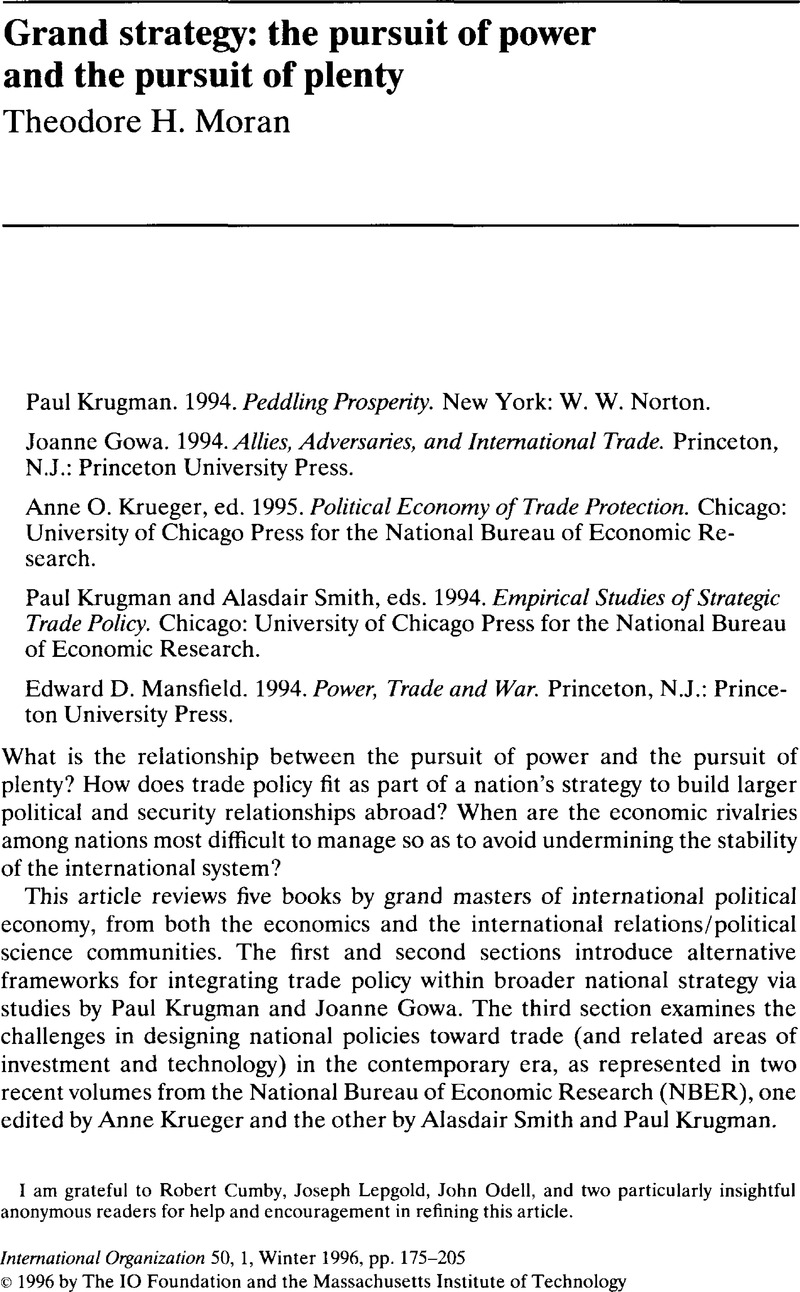Crossref Citations
This article has been cited by the following publications. This list is generated based on data provided by Crossref.
Moran, Jonathan
1998.
The Dynamics of Class Politics and National Economies in Globalisation: The Marginalisation of the Unacceptable.
Capital & Class,
Vol. 22,
Issue. 3,
p.
53.
Bobrow, Davis B.
and
Chan, Steve
1998.
On Being Strategic: Feasible Emphases for Nonmajor Powers.
Pacific Focus,
Vol. 13,
Issue. 1,
p.
5.
Herrmann-Pillath, Carsten
2006.
The true story of wine and cloth, or: building blocks of an evolutionary political economy of international trade.
Journal of Evolutionary Economics,
Vol. 16,
Issue. 4,
p.
383.
Mishrif, Ashraf
2021.
The GCC’s Unsettled Policy for Economic Integration*.
The Muslim World,
Vol. 111,
Issue. 1,
p.
70.





